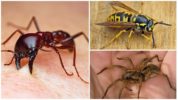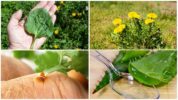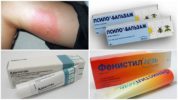- Allergic insect bites
- Plants that help with insect bites
- Allergy Products
First aid for insect bites is to neutralize a toxic substance, and prevent a severe allergic reaction. The mechanism of action depends on which particular insect attacked. If the "personality" of the parasite remains unknown, proceed according to general instructions.
What insects bite and why
In the warm season, it is difficult to avoid an insect bite, since active insects crawl and fly everywhere. Purposefully looking for a meeting with a person blood-sucking creatures – mosquitoes, midges, bed bugs, fleassome species of flies, gadgets, ticks. Parasites inflict multiple bites, but their saliva does not contain a strong allergen, a toxic substance. The consequences arise of moderate severity or lungs. An exception is cases of individual intolerance.
The second category of biting insects includes creatures that live in the wild, avoiding meeting with humans. Attack only for self-defense. They rarely inflict numerous bites, try to hide after the first attacking maneuver. Almost all of them have poisonous glands, so the consequences can be very different - from mild redness to a significant deterioration in well-being.
Dangerous insectsarthropods:
In the process of a bite, an insect injects poison, which instantly causes an allergic reaction on the skin, spreads throughout the body. With a high concentration of the toxic substance, general well-being worsens, dizziness, weakness, nausea, abdominal pain, tremors, cramps, fever, as well as increased blood pressure, tachycardia, laryngeal edema, and breathing difficulties occur. In this case, emergency medical assistance is required.
Important!
Due to global warming around the world, the northern regions of our country began to appear deadly spiders – karakurt, tarantulasfalse widows. In the absence of timely assistance, a person may die. The first signs of deterioration of well-being appear within 20 minutes.
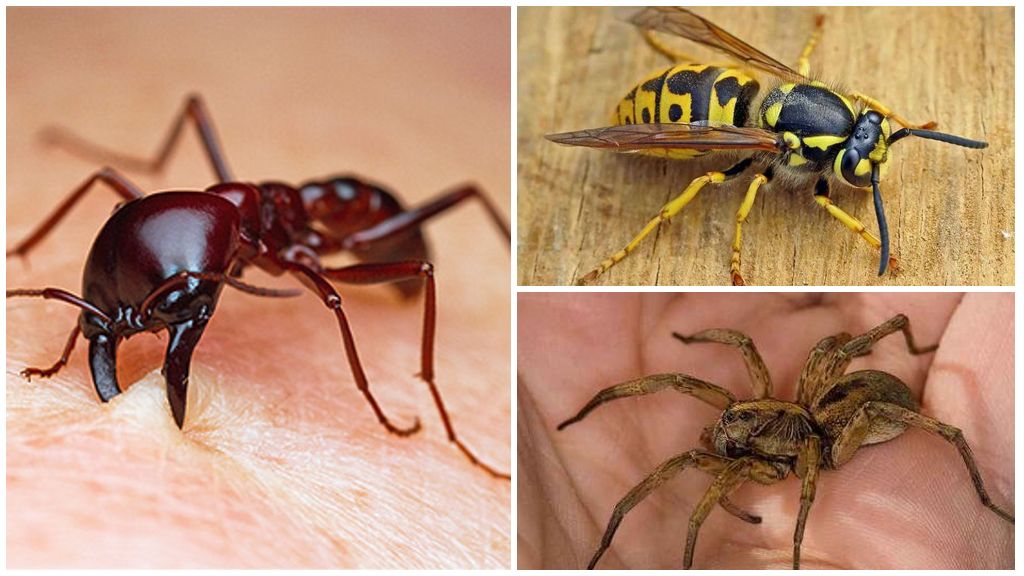
First aid for insect bites
The action algorithm is extremely simple, suitable for all situations.
- Initially, you need to wash off the remnants of an allergenic substance - saliva, poison. Use clean running water. To increase the effectiveness of soaping the affected area with household soap. If there is no access to running water, use a mineral bottle or spring.
- The next action is to neutralize the poison, reduce the likelihood severe allergic reaction. The choice of remedy depends on where the bite occurred. For therapeutic purposes, use special drugs, folk remedies, improvised materials. The basic rule is that the product should be antiseptic, disinfectant or containing any acid.
- The spread of poison is dangerous the appearance of leg swelling, hands, faces, etc. Initially, the affected area swells, then the entire limb.With individual intolerance to a toxic substance, edema of the internal organs, larynx develops. To prevent the spread of poison, do the following - a harness is applied a little higher from the site of damage to the cover or a bandage is made of bandage, gauze, scarf. If a sting of an unknown insect follows, an allergy develops, they call an ambulance. In other cases, a cold object, a heating pad, ice cubes wrapped in gauze are applied to the sore spot.
Further medical attention is required if:
- signs of allergy are pronounced;
- pain, itching does not subside;
- overall health does not improve;
- scale redness and swelling start to increase.
On a note!
At bee sting initially you need to pull out the sting. It remains in the skin, continues to pulsate, inject a toxic substance. At attack by a poisonous spider it is not recommended to squeeze out the poison, since such actions lead to the instant spread of the poison through the blood, tissue necrosis.
Green first aid kit for insect bites
Attacks occur in most cases in the wild. In the absence of special preparations, folk remedies are used. The therapeutic properties of many plants, vegetables, fruits.
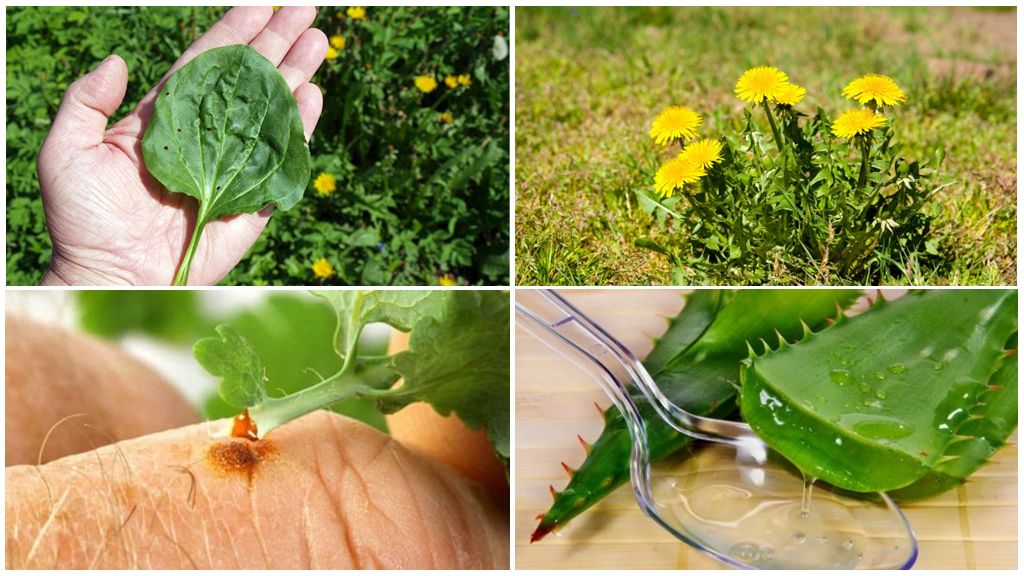
"Minute of health" for insect bites suggests using:
- plantain;
- dandelion;
- celandine;
- thyme;
- parsley;
- peppermint;
- bulb onions;
- aloe vera.
Other sources as effective folk remedies indicate:
- cucumber;
- garlic;
- lemon;
- orange.
On a note!
Juice has several therapeutic effects at once - anti-inflammatory, disinfecting, antiseptic, antibacterial, soothing, healing.
At home, based on the ingredients presented, tinctures and decoctions are prepared. Pour boiled water, insist for at least 15 minutes. Wipe the wound, apply compresses.
First aid for children at home
An allergy to an insect bite is a normal reaction of the body to damage to the skin, the ingress of foreign matter. People with weak immunity, small children develop an allergy of moderate severity or severe, requiring immediate treatment.
If, after an insect bite, the spot does not exceed 1 cm in diameter, the swelling is weak, itching, burning are present, and you can cope with the symptoms on your own. To wipe the wound using:
- tincture of valerian, motherwort, glod;
- ammonia, medical alcohol;
- hydrogen peroxide;
- tincture of vinegar - in a glass of water 1 tbsp. spoon of funds;
- paste from baking soda - diluted with water to a state of slurry;
- toothpaste - apply for 5 minutes;
- cold leaves of aloe vera.
If your home medicine cabinet has first aid products based on medicinal herbs, you can use them:
- balm Asterisk;
- Boro Plus cream;
- Calendula ointment;
- Menovazine;
- Rescuer, etc.
Treat the affected area ointment for insect bites 1-4 times a day. As the painful symptoms disappear, the frequency of treatments is reduced.
What to do with allergic insect bites
The principles of first aid remain unchanged - to rinse the wound, disinfect, neutralize the poison, prevent the spread of blood. To eliminate the local symptoms of allergies, antihistamines, antiallergic drugs are used. Each is accompanied by instructions, age restrictions. It is necessary to read carefully before treating the child with a bite site.
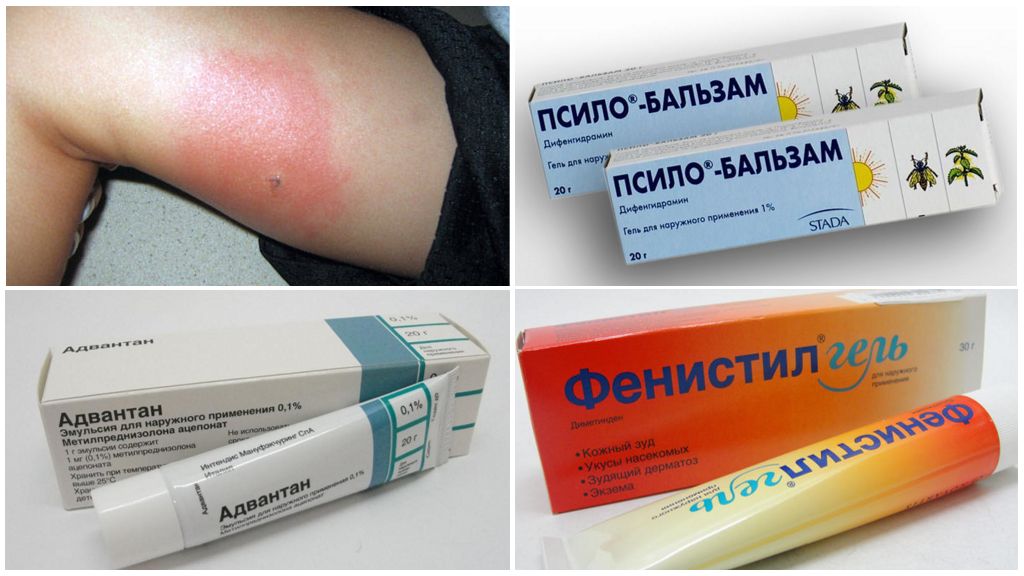
- Fenistil gel. Use is allowed for children from 1 year. The drug with antihistamine, anti-inflammatory, antipruritic effect. It begins to act within 5 minutes, allergy symptoms disappear in a day. Finally, the skin is restored in 5 days. Without consulting a specialist, you can use the gel for no longer than 5 days. The cost of the drug is 355 rubles.
- Psilo-Balm.An antihistamine acts similarly to the previous remedy, but additionally contains menthol. Relief comes immediately, thanks to a refreshing effect. Use is permitted from 1 year old. Apply dot thinly. It is allowed to use no longer than 5 days without consulting a physician. Allergy symptoms disappear gradually. The very next day, the sore spot ceases to itch, swelling subsides, inflammation decreases. The price of the drug is within 450 rubles.
- Advantan. Antiallergic agent. Allowed to be used by children from 6 months. The drug acts on the basis of a hormonal substance from the group of glucocorticosteroids. It has a pronounced anti-inflammatory, antipruritic, decongestant, soothing effect. Available in the form of a cream, ointment, suspension. Apply point to the site of the bite 1-2 times a day. Duration of use without consulting a specialist is 3 days. Signs of allergies disappear in a couple of days, redness disappears almost instantly, itching disappears in 5 minutes. The cost of Advantan is within 700 rubles.
With a pronounced allergic reaction, systemic antihistamines are taken orally in the form of tablets, solution, suspension. Effective remedies - Suprastin, Claritin, Diazolin, El Tset, Fenistil. The dosage is selected depending on age, body weight. The average duration of therapy is 10 days. People with an increased tendency to allergies in the summer are advised to carry antihistamines with them. Take immediately after an insect bite.
